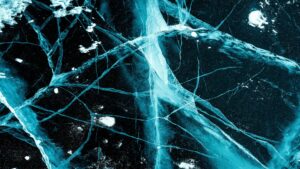The Future Where AI Has "Unforgettable Memory" and "Explosive Change": A SIer's Deep Dive into the New Normal
Hello, I'm Tak@, and I'm a system integrator. I help bring your ideas to life.
What if AI could instantly retrieve forgotten memories with dramatically improved accuracy? How would that change the future of system development?
Unlocking the Depth of Memory: A New Perspective on Higher-Order Interactions
We process and store vast amounts of information daily, retrieving it as needed. Similarly, AI models "memorize" learned data to perform reasoning and generation tasks. However, the mechanism of this "memory" has traditionally been understood through simple pairwise relationships—where two elements influence each other one-to-one.
Yet, in the complex systems of the real world, such as our brains and social networks, multiple elements are intertwined, influencing each other through "higher-order interactions." These are the invisible forces that drive surprising changes in a system.
"Curved Space" Unlocks the Potential of AI Memory
For a long time, explicitly incorporating these higher-order interactions into AI models was extremely difficult. The number of parameters required would increase exponentially, making it virtually unmanageable. It was like trying to map all human relationships with individual lines, creating an incomprehensibly tangled mess.
Explosive neural networks via higher-order interactions in curved statistical manifolds
Now, a new model called "curved neural networks" offers a solution. It leverages a concept from statistical physics to naturally include all orders of higher-order interactions without increasing the number of parameters. Instead of operating in a "flat statistical space," this new model works in a "curved statistical space," where the "curvature" itself has a significant impact on the network's behavior. The elegance and simplicity of this approach were mind-blowing to me, especially when I think about the complexities of integrating modern systems.
"Self-Adjusting Annealing" for Recalling Memories
A core mechanism of this new model is "self-adjusting annealing." In traditional AI, a "temperature" parameter is manually adjusted to control the search range for memories. A high temperature allows for a broad search, while a low one causes the model to converge quickly on a specific memory—a process known as simulated annealing.
In this new model, however, the "temperature" adjusts automatically based on the AI's current "memory state." It's as if the AI itself senses what it's looking for and switches to the optimal search mode.
- Negative Curvature Leads to "Explosive Convergence": If the curvature is negative, the "effective temperature" drops as the AI gets closer to the correct memory. This causes the AI to converge rapidly and decisively on that memory, leading to an "explosive" recall. This is explained by a "positive feedback loop": the closer the AI gets to a good memory state, the more its convergence accelerates. From my experience in software development, this self-adjusting mechanism feels like a senior developer team finding their optimal pace based on project status, without the need for constant micromanagement.
Balancing Memory Capacity and Robustness
This self-adjusting annealing mechanism not only speeds up memory retrieval but also improves the AI's memory capacity and robustness (its ability to retrieve accurate memories despite noise or interference).
- Negative Curvature Increases Capacity: Models with negative curvature can hold more memory patterns.
- Positive Curvature Enhances Robustness: Models with positive curvature slightly reduce memory capacity but suppress the formation of "spurious memories" (patterns the AI mistakenly thinks it learned), leading to more reliable retrieval.
This allows us to flexibly control the trade-off between the AI's memory capacity and accuracy by adjusting the curvature—much like a project manager balancing the scope, quality, cost, and schedule of a project.
Validating the Theory with Real-World Data
To test this new theory, the research team conducted a simulation using the CIFAR-100 image dataset. The results confirmed the theoretical predictions: negative curvature increased memory capacity, while positive curvature led to more reliable memory retrieval. This proved that the "curved neural network" is not just a theoretical concept but can deliver tangible results with real-world data.
New Design Principles for the Future of AI
This research isn't just about a new neural network model. It offers a new perspective on AI's fundamental element of "memory" and could influence the design principles of future AI systems.
- Learning from the Brain: The human brain efficiently stores and flexibly uses vast information. This self-adjusting annealing mechanism might provide a clue to understanding the brain's efficient memory retrieval process.
- Implications for Modern AI: The findings suggest that self-adjusting annealing phenomena could be structurally similar to attention mechanisms in Transformer models or diffusion models. This means this theoretical framework has the potential to improve various AI technologies, including image and language generation.
Conclusion: The Day AI Makes Your "Wouldn't It Be Great If…" a Reality
This research on "curved neural networks" sheds new light on the mechanisms of AI memory, showing a path to dramatically improve its performance. By skillfully incorporating higher-order interactions and accelerating memory retrieval through self-adjusting annealing, this model could become a crucial guide for future AI development.
I'm currently building tools using generative AI to make "wouldn't it be great if…" ideas a reality. I'm convinced that fundamental technological advances like this will turn our wildest imaginings into concrete reality.
Imagine a future where AI, like a brilliant person who never forgets, instantly pulls up the information it needs, bringing incredible value to our lives and businesses. What "memories" would you entrust to an AI like that? And what would you want to achieve with them?



